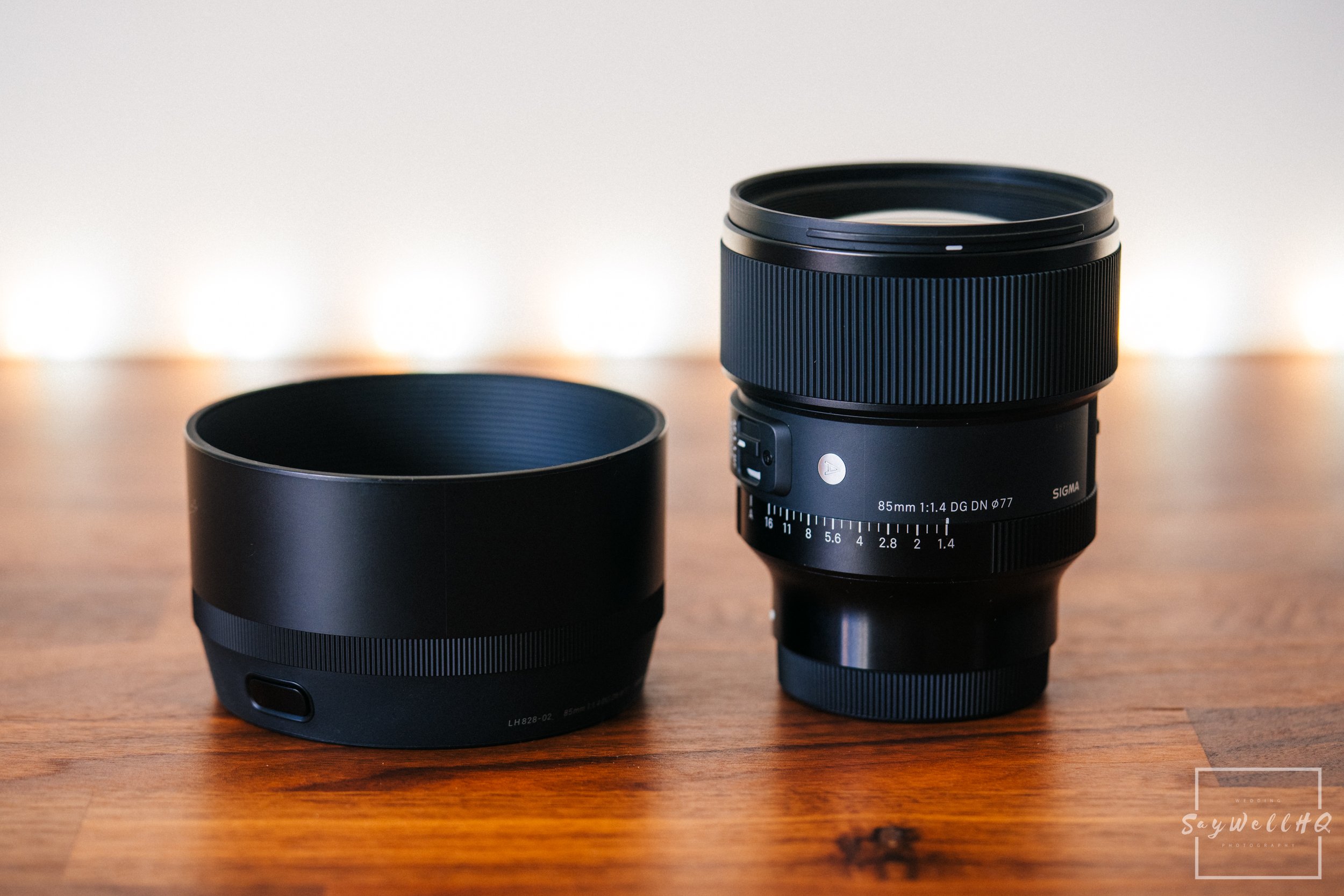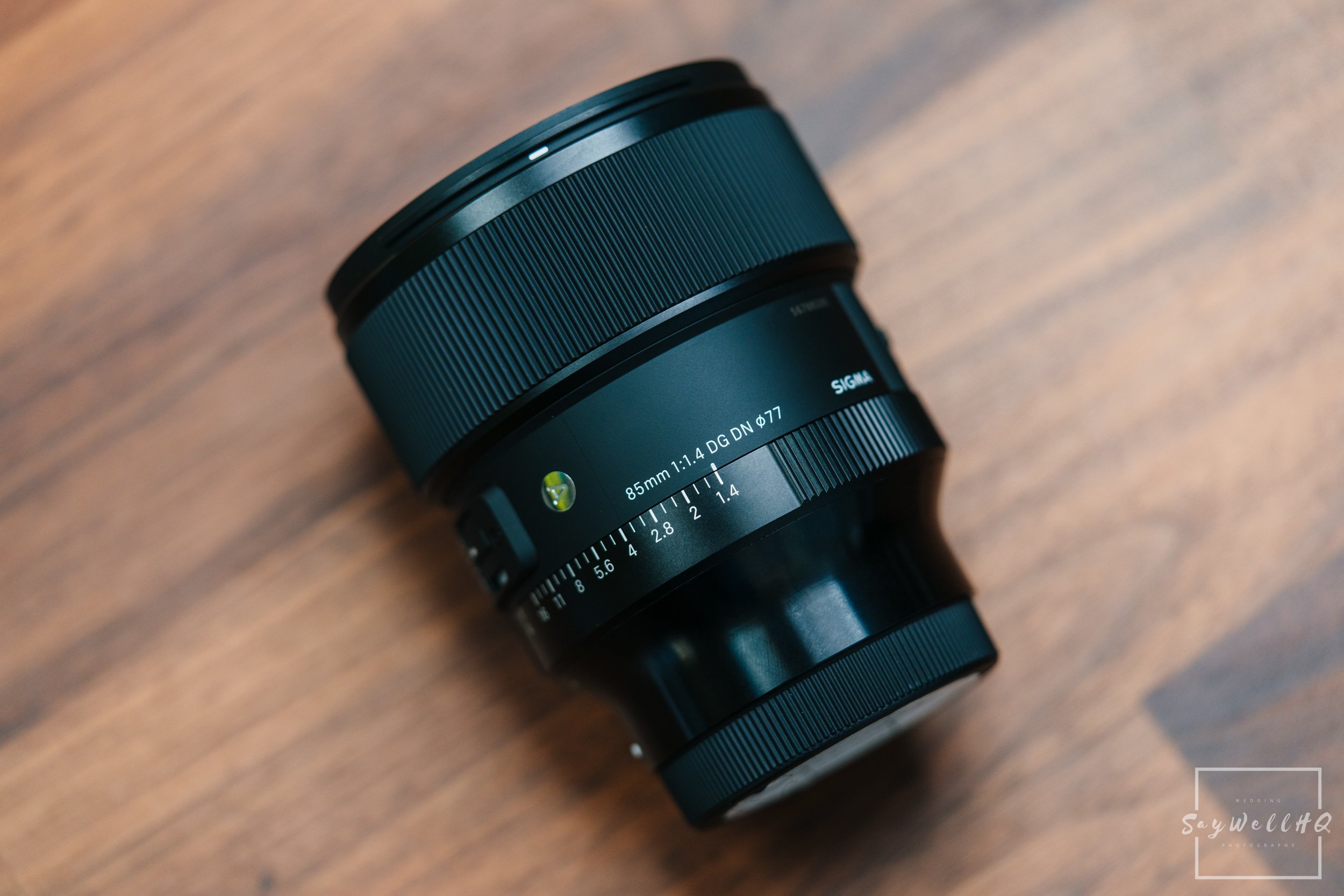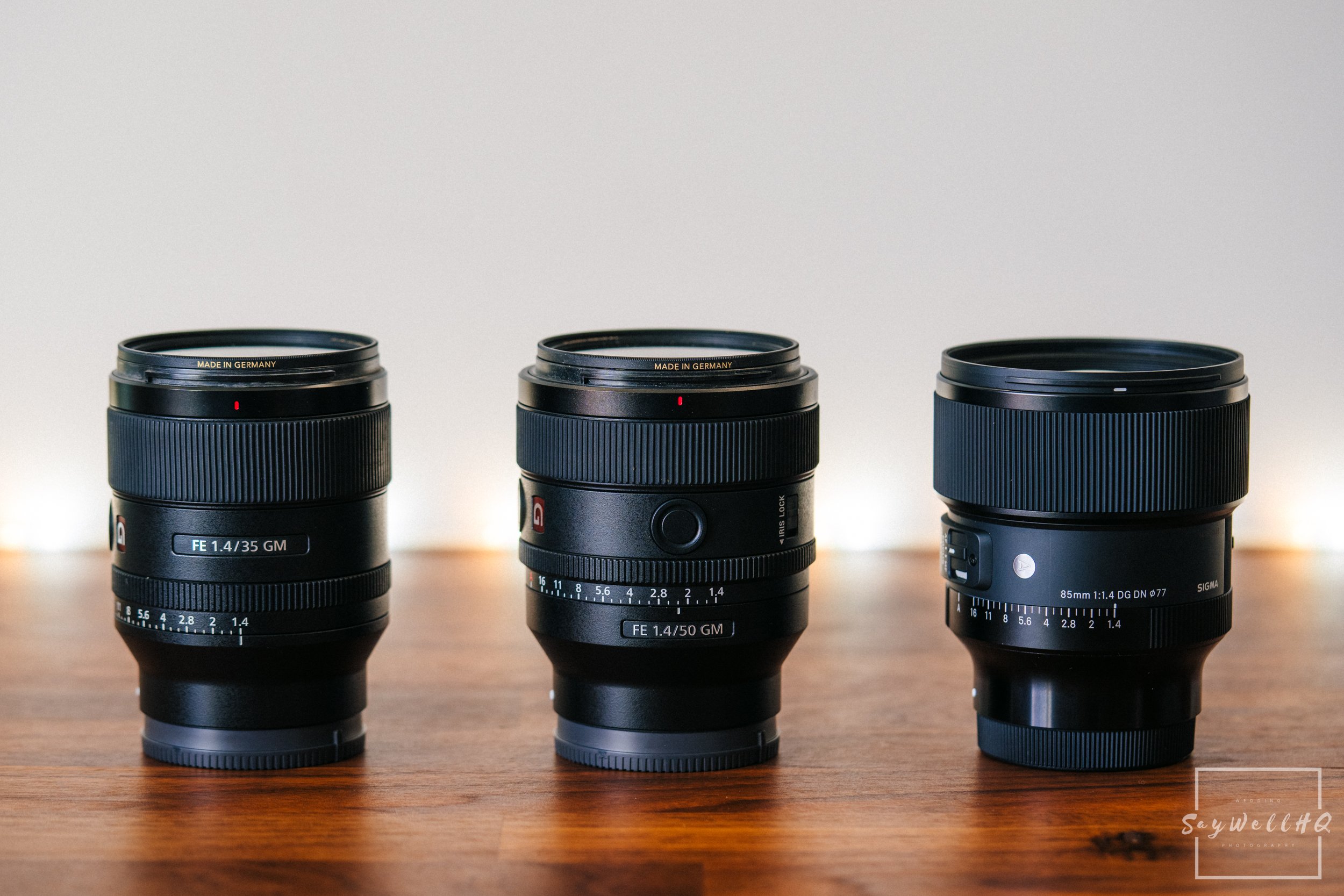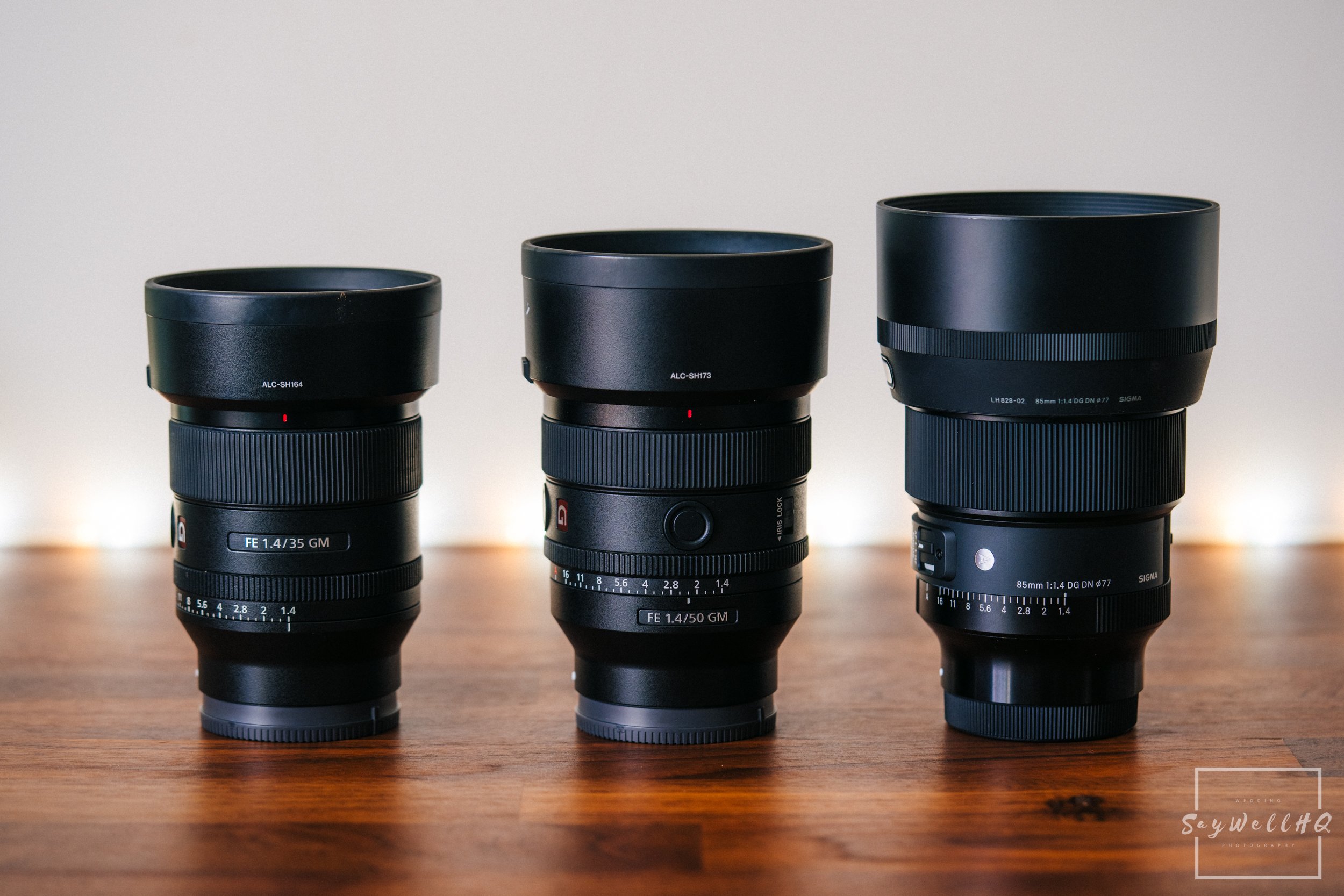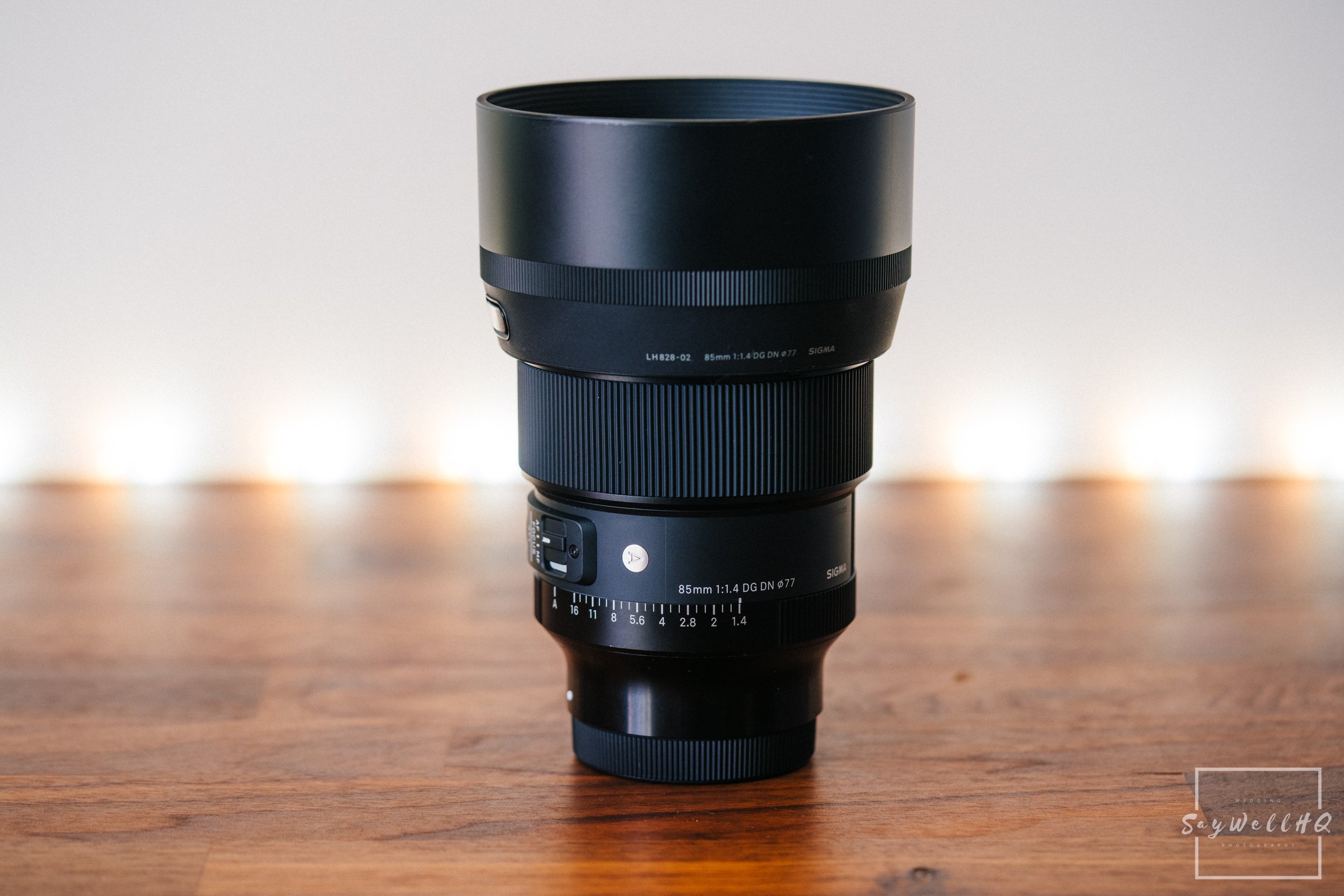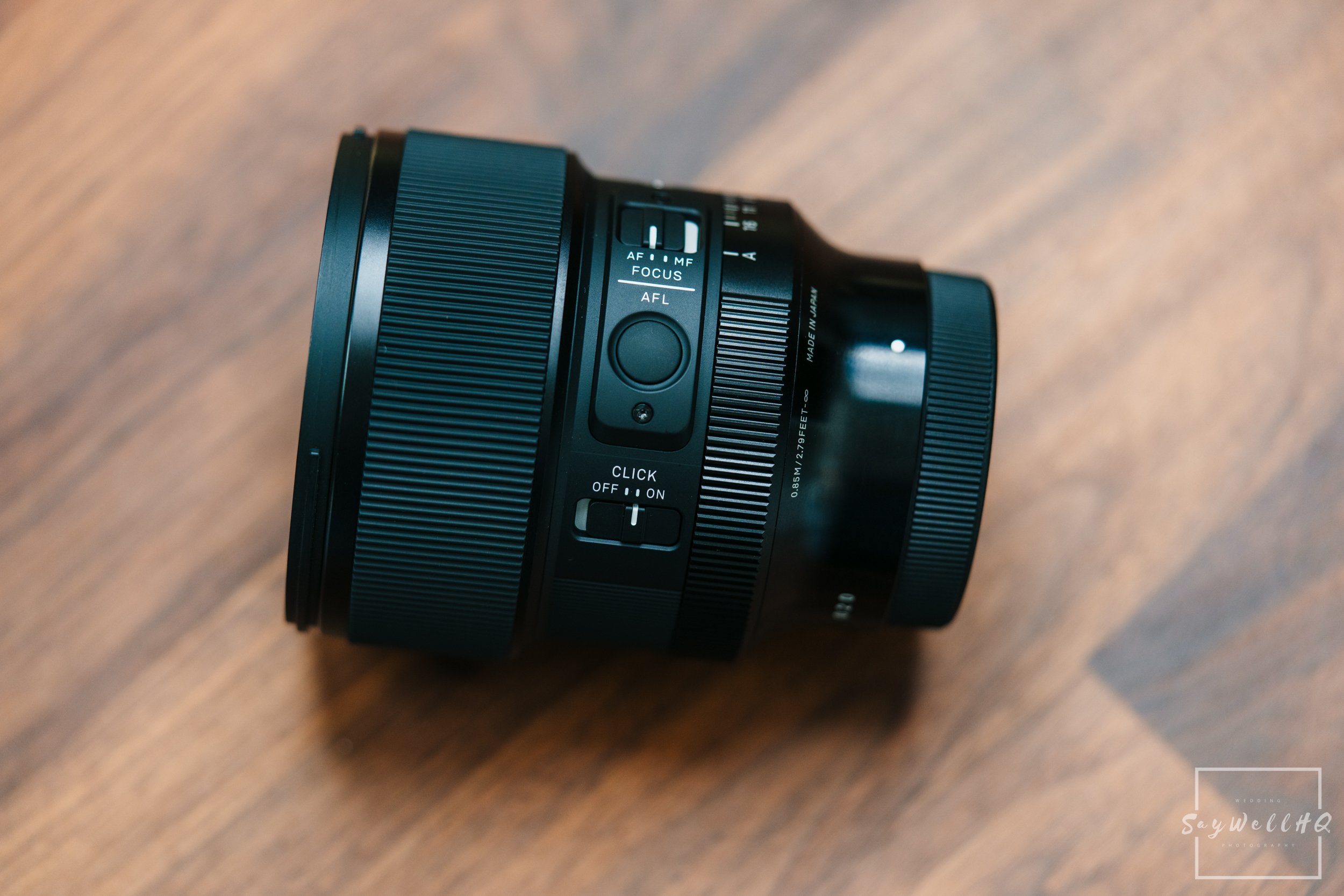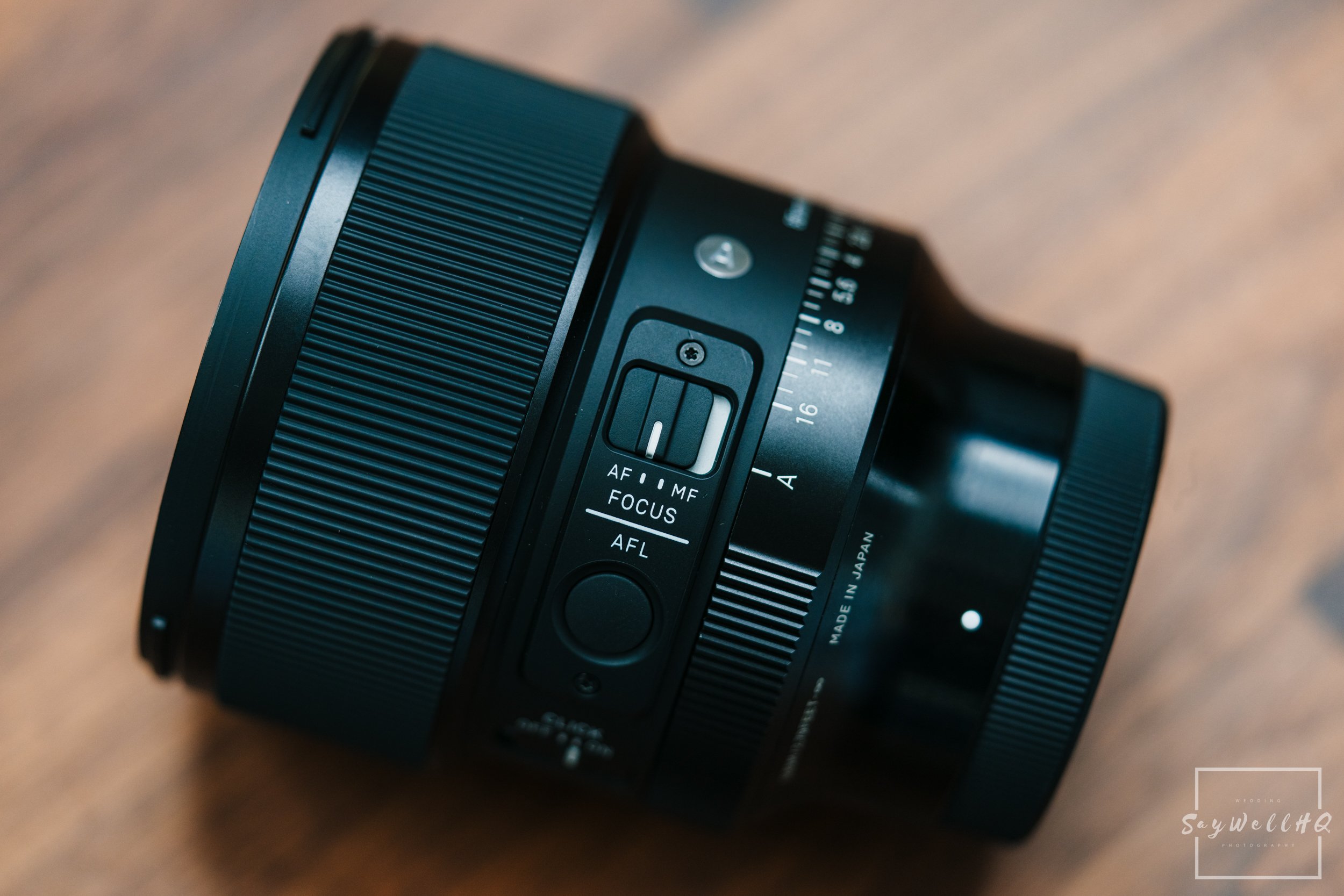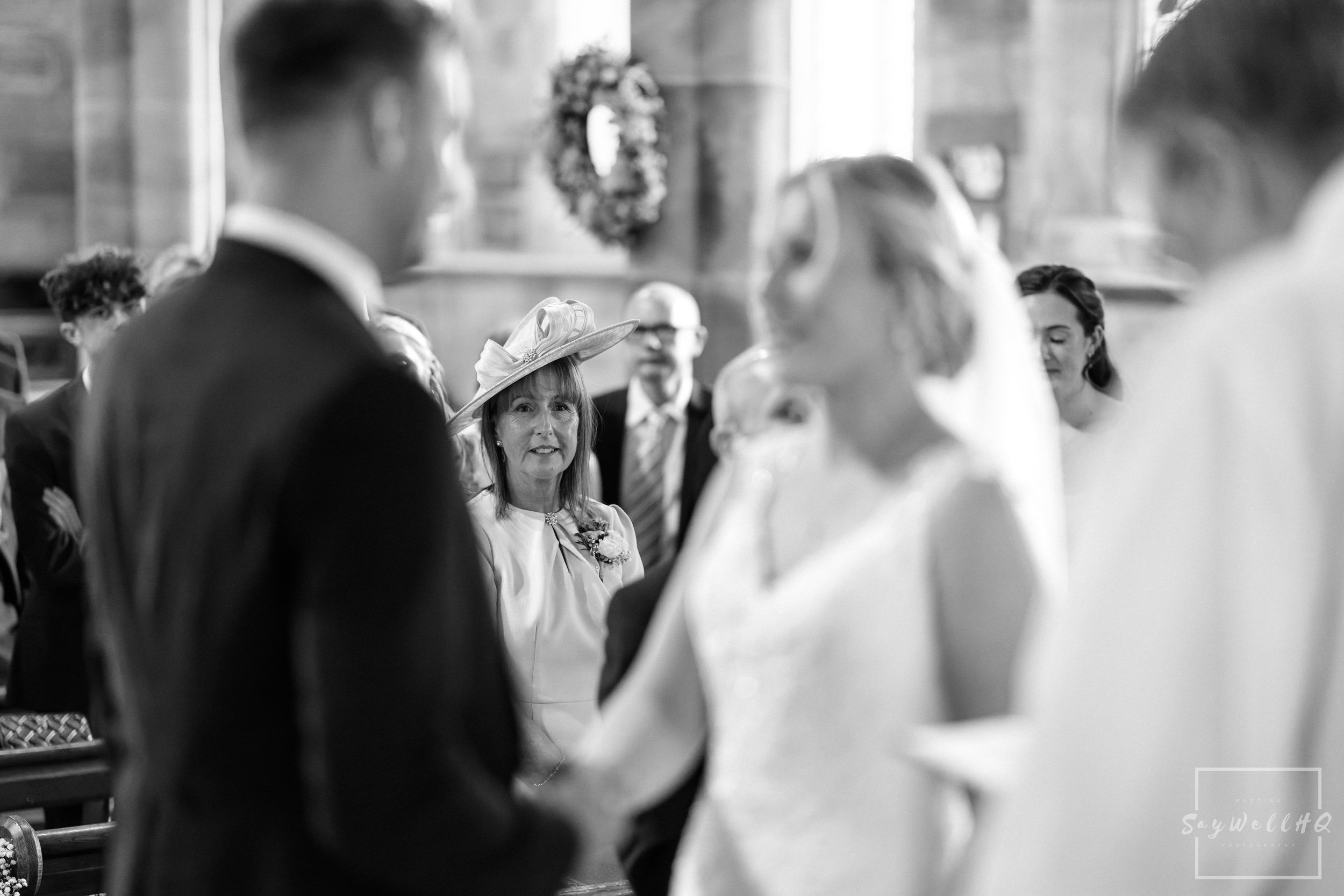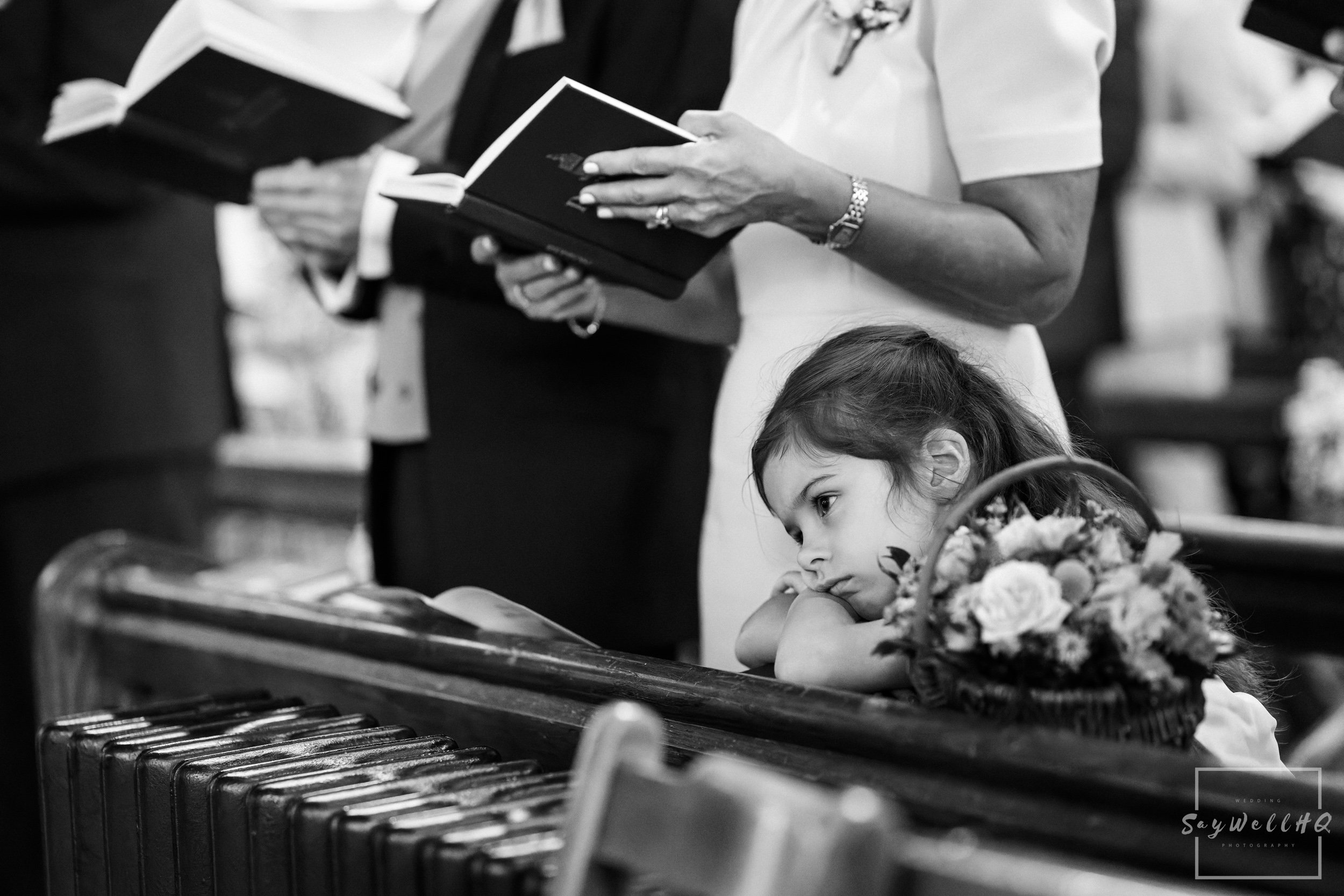REVIEWS | WEDDING PHOTOGRAPHY WITH THE SIGMA 85mm F1.4 DG DN LENS
In this blog post, I discuss how I use the Sigma DG DN 85mm F1.4 Lens on a wedding day.
The release of the Sigma 85mm F1.4 DG DN Art lens for Sony E-mount marked an important moment for photographers and videographers using Sony’s full-frame mirrorless cameras — finally, a mirrorless-specific Sigma 85mm designed from the ground up for the system.
Before its launch, if you wanted the “Sigma look” in an 85mm, you had to settle for the older 85mm F1.4 Art lens with an adapter permanently bolted to the mount.
When the Sigma 85mm F1.4 DG DN arrived in August 2020, Sony E-mount shooters already had a healthy selection of 85mm options: the Sony 85mm F1.4 GM, the Sony 85mm F1.8, the Zeiss 85mm F1.8 (which, as far as I can tell, is essentially the same as the Sony), the older Sigma 85mm F1.4 Art, and more recently, releases from brands like Samyang, Viltrox, and others.
So, why would someone choose the Sigma 85mm F1.4 DG DN over Sony’s own 85mm offerings? Let’s take a closer look.
HOW I USE A 85mm LENS ON A WEDDING DAY
I’ll be honest — I’m not a big fan of the 85mm focal length as a main lens, especially when paired with a 35mm in a two-lens setup. For the type of images I like to capture at weddings, 85mm just feels too long. In my three-camera setup, the 50mm is my “long” lens for most of the day, with 20mm and 35mm covering the rest.
Back when I did shoot with a 35mm & 85mm combo, the transition between focal lengths never sat right with me. I’d go from a 35mm image, 35mm image, 35mm image… then suddenly 85mm, 85mm, and back to 35mm again. The wide–close–wide–close pattern felt jarring, and the jump in perspective between the two was too big for my liking.
So, why am I reviewing the Sigma 85mm F1.4 DG DN? Simple — I still use it at most weddings, just not as a main lens. It comes out of the bag for specific parts of the day: speeches, church ceremonies, and occasionally couple portraits. I also see it as a backup in case my 50mm goes down during a wedding.
85mm LENS FOR SPEECHES
For speeches, if I have enough space, the 85mm goes on my third camera body in place of the 20mm. This gives me a three-lens setup of 35mm, 50mm, and 85mm for that part of the day.
I only use the 85mm in this scenario if the room is long or I know I’ll need the extra reach. In some venues, my 50mm on the A1 in crop mode (around 75mm reach equivalent) just isn’t long enough to capture certain guests if I’m positioned in the middle of the room or close to the top table.
The 85mm is excellent for picking out people from a distance during speeches, making it perfect for capturing reaction shots. It’s great for adding variety to my speech photos, and when paired with the Sony A1, I can switch to APS-C crop mode for an effective reach of around 120mm — while still retaining a 21MP file.
85mm LENS FOR WEDDING CEREMONIES
Here in the UK, the 85mm lens can be a real asset for church wedding photography. We photographers are often positioned as far away from the ceremony as possible, so the extra reach is invaluable.
Just as I do with speeches, I’ll usually swap out my 20mm for the Sigma 85mm F1.4 DG DN during the ceremony, giving me a setup of 35mm, 50mm, and 85mm.
The 85mm is ideal for picking out guests in the pews — especially the parents of the couple — and, if you’re allowed to move around during hymns or readings, it’s perfect for catching those little candid, funny moments that often happen during a longer church service.
85mm LENS FOR COUPLES PORTRAITS
I’d say the 85mm focal length is one of the most flattering choices you can use for couples’ portraits. It avoids distorting faces or arms, and if you have enough space between yourself, your couple, and the background, the shallow depth of field can be incredibly appealing.
That said, I’m not primarily a portrait photographer and don’t shoot many couples’ portraits on a wedding day. When I do, I usually reach for my 50mm F1.4 GM. I prefer being closer to the couple so I can engage with them more naturally, rather than feeling like I have to shout instructions from a distance — which is often the case when using the 85mm.
THE GOOD
Image Quality vs. The Competition
Sigma has long been respected for the image quality of its prime lenses. Over the years, I’ve owned the older Sigma 35mm F1.4 Art for Sony, the Sigma 35mm F1.2 Art, the 28mm F1.4 Art, and the 24mm F1.4 DG DN, and I’ve also spent time with the Sigma 135mm F1.8 Art. All of them have produced beautiful, characterful images.
The newer Sigma 85mm F1.4 DG DN continues that tradition, delivering crisp, sharp results with a warm rendering, well-controlled flare, and only minimal purple fringing in rare situations.
In terms of image quality and sharpness, the Sigma outperforms the Sony FE 85mm F1.4 GM — which isn’t surprising, given that the Sony was released back in February 2016, a good 4.5 years before the Sigma. It also easily beats the Sony FE 85mm F1.8 in every area. That lens, which isn’t even a G-series, suffers from severe purple fringing in even simple lighting conditions.
For me, the Sigma 85mm F1.4 DG DN is the best overall 85mm lens currently available for the Sony system (at the time of writing).
Autofocus
I have autofocus listed in both the “Good” and “Not So Good” sections because, while it can be excellent, it can also be inconsistent.
You quickly learn the situations the lens doesn’t like — one of the main ones being when there’s bright (or even moderately bright) light behind your subject. If you can’t change your position to avoid that backlight, you’ll need to take more shots than usual and hope it locks on.
Using Sony Alpha 1 bodies with native Sony lenses, I can count on one hand the number of slightly out-of-focus images from an entire wedding. With the Sigma, the hit rate simply isn’t as strong as the current generation of Sony GM lenses.
One final note on autofocus — the Sigma focuses silently. It’s a small detail, but one that anyone who has used the Sony 85mm F1.4 GM (which is noticeably louder) will appreciate.
Size & Build Quality
The lens is very well built — I’ve dropped it a few times when pulling it from my camera bag, and it’s taken the knocks without issue.
It also features a rubber gasket on the lens mount, giving it weather sealing. For a professional lens, that level of durability and protection is an essential part of the build quality.
With a 77mm filter thread, the Sigma 85mm F1.4 DG DN is the same size as the Sony 85mm GM. At 625g, it’s almost 200g lighter than the Sony, though I suspect that some of that weight saving comes at the expense of optical performance — specifically lens distortion, which I’ll cover in the Not So Good section.
Overall, it’s a well-built, solid lens that should deliver many years of reliable service.
Aperture Ring
I’m a photographer who prefers to use the aperture ring on the lens itself to adjust the aperture.
Some photographers prefer using the front or rear dials on the camera body, but I’ve never been comfortable with that. I tend to carry my cameras via my HoldFast harness, and in the process I often knock or roll those dials. If they were set to control aperture, I’d constantly be changing it by accident.
Every lens I use for weddings has an on-lens aperture ring — it’s a feature I’ve loved since my days shooting with Fujifilm. It’s great to see manufacturers like Sigma following suit and adding aperture rings to their lenses.
On Lens Functions, Buttons & Locks
The Sigma 85mm F1.4 DG DN has more buttons, dials, and switches than many full-frame cameras, including:
AF/MF switch – Quickly toggle between autofocus and manual focus.
Programmable button – Can be assigned to various functions via the camera menu. I personally leave it disabled, as I often hit it accidentally when grabbing the camera.
Aperture click/de-click switch – Lets you disable the tactile clicks on the aperture ring. Ideal for videographers who need smooth, silent aperture changes while recording.
Aperture lock switch – Locks the aperture ring to the ‘A’ position, allowing aperture control via the camera’s front or rear dials. Without locking it, there’s a risk of accidentally knocking the ring and overriding dial control.
Price
As of October 2023, the Sigma 85mm F1.4 DG DN is listed on Amazon for £899, while the Sony 85mm F1.4 GM comes in at £1,489 — that’s a hefty £590 more for the Sony.
Is the Sony worth the extra cash? In my opinion, absolutely not. And this is coming from someone who almost always recommends first-party glass over third-party options. Right now, until Sony updates the 85mm F1.4 GM, the Sigma offers the best value for money in the 85mm category for the Sony E-mount system.
THE NOT SO GOOD
Autofocus
As mentioned earlier, I’ve placed autofocus in both the ‘Good’ and ‘Not So Good’ sections because, while the Sigma 85mm F1.4 DG DN is capable, it can be inconsistent. It’s not that it completely misses to the point where nothing is recognisably in focus, but you will see the occasional miss.
The newer Sony GM lenses have spoiled us — they simply don’t miss — and because they’re designed alongside Sony camera bodies, it’s reasonable to expect flawless performance from them.
With the Sigma, if you fire off a burst of 10 shots, you can almost feel the lens pulsing as it works, and you’ll know a few frames will be softer than the others. It’s not catastrophic, but enough that you notice when reviewing a burst sequence.
I’ve also found it struggles more when using subject tracking compared to using a single focus box. Again, Sony lenses excel at both — they’re the benchmark — and this is where the Sigma occasionally falls short (no pun intended).
FPS on High-End Sony Bodies
This might be a small point for many photographers, but it’s worth mentioning.
All third-party lenses are capped at a maximum shooting speed of 15fps, meaning they can’t take full advantage of the Sony A1’s highest frame rates — or those of any future Sony bodies with even faster capabilities.
Personally, this isn’t an issue for me, as I typically shoot at 10fps on my Sony A1s.
The Lens Hood
The lens hood on the Sigma 85mm f1.4 is huge — seriously big.
Does it really need to be this large?
When you compare it side-by-side with the Sony 35mm GM and Sony 50mm GM, all three lenses are roughly the same height without their hoods. But once you attach the hoods, the Sigma’s oversized design really stands out.
For some photographers, this won’t be a big deal. For me, it’s frustrating — when reversed, the Sigma hood is still too bulky to fit neatly into my camera bag, unlike every other lens I own.
Lens Distortion
I suspect this is where Sigma has made compromises to keep the lens smaller and lighter.
If you want a lens to be optically perfect, you have to accept extra size and weight. If you want something compact, there will always be trade-offs.
Sigma has clearly leaned on Sony’s in-camera lens corrections (much like how Lightroom automatically corrects RAW files). With corrections turned on, you won’t notice the pincushion distortion. Turn them off, however, and you’ll see an unusually high amount of it.
Will this matter to you? Maybe, maybe not. But it’s worth noting — not everyone likes how in-camera corrections are applied, as they can sometimes overcompensate for vignetting, colour fringing, and other optical issues.
SIGMA DG DN 85mm F1.4 LENS IMAGES
